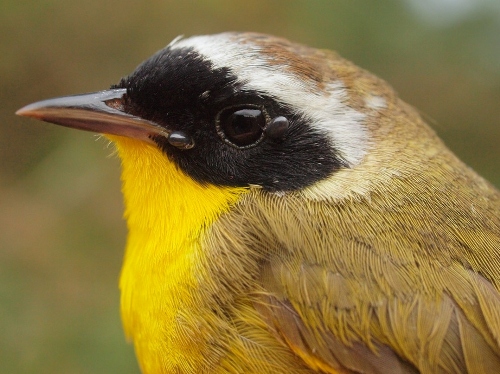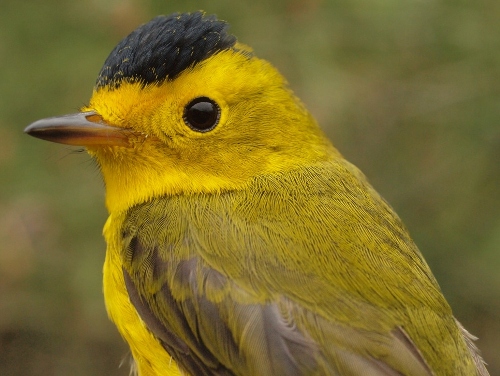|
|
THIS WEEK |
THIS SPRING |
2014 TOTAL |
SITE TOTAL |
|
# birds (and species) banded |
74 (19) |
1356 (69) |
1356 (69) |
47666 (115) |
# birds (and species) repeat |
24 (8) |
295 (34) |
295 (34) |
9429 (70) |
|
# birds (and species) return |
4 (4) |
127 (25) |
127 (25) |
1561 (38) |
|
# species observed |
83 |
143 |
144 |
209 |
|
# net hours |
216.0 |
3021.4 |
3021.4 |
82204.7 |
|
# birds banded / 100 net hours |
34.3 |
44.9 |
44.9 |
58.0 |
|
|
Note: table does not include nocturnal banding (owls) |
Banders-in-charge: Simon Duval, Gay Gruner
Assistants: Sue Bishop, Marc Boisvert, Luke Currin, David Davey, Barbara Frei, Alison Hackney, James Junda, Lisa Keelty, Marcel Lebeau, Betsy McFarlane, Ana Morales, Benoît Piquette, Catherine Russell, Ahmad Shah, Christiane Tremblay
Notes: Spring 2014 was exceptionally productive at MBO, and true to form, we finished on a strong note, with a record high 74 individuals banded in our final week of the season bringing our season total to 1356, a substantial 36% increase over the previous high of 994 set in 2012. Additionally, the 127 returns from previous years was a record high. Although we added no further species this week, the 69 species banded is also a new record, one more than last spring. The 83 species observed this week was just one shy of the record count for this period, set in 2008, and the season total of 143 ended up being slightly above the long-term mean of 140. The only new species for the season added this week were observations of Common Tern and Eastern Meadowlark
This week’s
top 10 [last week's top 10 in brackets]
#
individuals banded |
mean # individuals observed daily |
1. Tennessee Warbler (16) [1] |
1. Ring-billed Gull (34) [1] |
2. Cedar Waxwing (11) [3] |
2. Cedar Waxwing (24) [3] |
3. Common Grackle (10) [9] |
3. Red-winged Blackbird (20) [2] |
4. Traill's Flycatcher (7) [2] |
4. Song Sparrow (9) [7] |
4. American Goldfinch (7) [-] |
5. Yellow Warbler (9) [6] |
6. Magnolia Warbler (3) [5] |
6. American Crow (8) [4] |
6. Wilson's Warbler (3) [3] |
7. Cliff Swallow (8) [-] |
| 8. Red-eyed Vireo (2) [-] |
8. Tennessee Warbler (8) [5] |
| 8. Northern Waterthrush (2) [-] |
9. Common Grackle (7) [9] |
8. Common Yellowthroat (2) [8]
8. Blackpoll Warbler (2) [9]
8. Song Sparrow (2) [-] |
9. American Goldfinch (7) [8]
|
|
The unprecedented wave of Tennessee Warblers that moved through MBO last week was not quite finished – another 16 this week easily topped the list of species banded for the final spring period. Previously we had never banded more than 3 Tennessee Warblers in week 10, so we were again surprised to have such a large number of them right at the tail end of the season. Continuing our season-long theme, Cedar Waxwings were prominent again, wrapping up the spring with another strong second place showing, bringing the season total to 232. Common Grackles were relatively numerous for a second week in a row, and their season total of 29 ended up being the highest since 2005. With a good push of late migrants, the season total for Traill’s Flycatcher reached 34, nearly double the previous record of 19 in 2011. American Goldfinches rebounded this week to tie for fourth place, and their season total of 60 is also the best since 2005. Including a five-way tie for 8th place, five more warblers, a vireo, and a sparrow rounded out the list for the final week of spring. Among these, Northern Waterthrush (48), Common Yellowthroat (40), Magnolia Warbler (82), and Wilson’s Warbler (35) also set new spring season records – it has been a great year for warblers so far, and we are looking forward to seeing how that translates into fall numbers in just a couple of months from now.
Except for 2011, Red-winged Blackbird has been the most numerous species during the final week of spring every year (in that case, Canada Goose barely snuck ahead). Over the course of those nine years, the mean daily count of blackbirds was also relatively consistent, ranging from 22 to 36. This year’s results were therefore the lowest ever, albeit by a rather small margin, and for the first time, two other species were more abundant during this period, led by Ring-billed Gull which wound up topping the final three weeks of the season. The remaining species on the list were all less than half as abundant as this week’s top three; among those, Tennessee Warbler made its first appearance for week 10, and Cliff Swallow for the first time this spring .
Thank you as always to our dedicated volunteers who helped make this season a success! We look forward to seeing you all again when the Fall Migration Monitoring Program kicks off in just 8 weeks, on August 1.
|

Common Yellowthroat, another of the warbler species that reached record totals in spring 2014. Note also the two engorged ticks on this male’s face; these were removed during banding, and submitted to an ongoing research program that tracks the movement of bird-borne ticks.
(Photo by Simon Duval)
|


